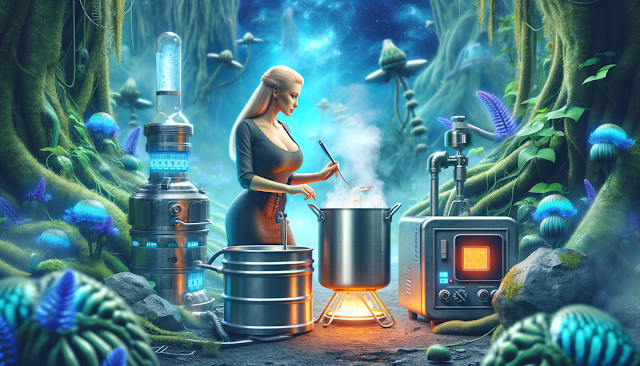It is responsible for the color and flavor of many cooked foods, such as bread crust, seared meat, and roasted coffee.
The reaction begins with the condensation of a reducing sugar with an amino group of an amino acid, resulting in the formation of a glycosylamine intermediate. This intermediate can then undergo a series of complex reactions, including rearrangements, fragmentation, and dehydration, leading to the formation of a wide range of 'intermediate products'.
These intermediate products can further react with other amino acids or reducing sugars, leading to the formation of additional compounds that contribute to the characteristic flavor and aroma of the Maillard reaction products. The final products of the Maillard reaction include a variety of volatile and non-volatile compounds, such as furans, pyrazines, and melanoidins, which contribute to the unique flavor and color of cooked foods.
Great, so it can make steak taste great, what does the Maillard reaction have to do with making beer?
The Maillard reaction can have an impact on beer flavor and color during the brewing process.
When malted barley is heated and dried during the malting process, the heat can cause Maillard reactions to occur, resulting in the development of flavor and color compounds that will later contribute to the final beer.
During the brewing process, the Maillard reaction can also occur during the boiling and caramelization of the wort. This can result in the development of desirable flavor and color compounds, such as melanoidins, which contribute to the complexity and depth of the beer's flavor.
Excessive Maillard reactions during the brewing process can also lead to the formation of unwanted flavors and aromas, such as burnt or caramelized notes, which can negatively impact the overall quality of the beer.
The Maillard reaction is named after French chemist Louis-Camille Maillard, who first described the reaction in a paper published in 1912. In the paper, Maillard investigated the reaction between amino acids and reducing sugars in a model system, and he described the formation of a brown color and a characteristic aroma.
During the brewing process, the Maillard reaction can also occur during the boiling and caramelization of the wort. This can result in the development of desirable flavor and color compounds, such as melanoidins, which contribute to the complexity and depth of the beer's flavor.
Excessive Maillard reactions during the brewing process can also lead to the formation of unwanted flavors and aromas, such as burnt or caramelized notes, which can negatively impact the overall quality of the beer.
The Maillard reaction has since been the subject of extensive research and is now recognized as an important reaction in food science, chemistry, and many making beer!


0 comments:
Post a Comment